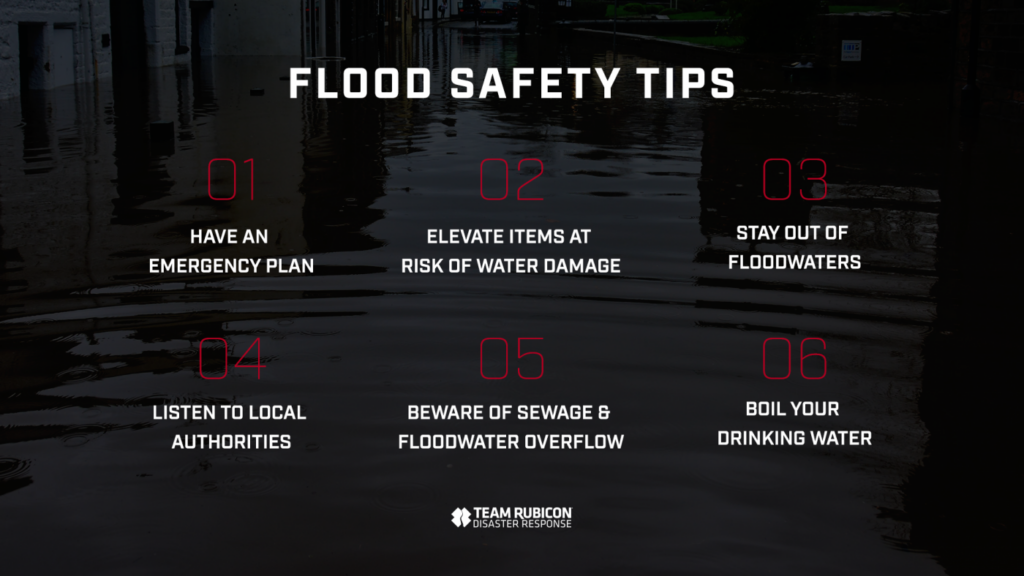- Have an Emergency Plan: When disaster strikes, it’s important to already have an emergency plan in place. Communicate with your family and neighbors ahead of time on resources, medicine, and anything else you might need in the worst-case scenario.
- Follow Instructions of Local Authorities: If requested by local authorities, evacuate early. Follow existing CDC guidelines on proper physical distancing and mask requirements.
- Lift It or Lose It: If you are in an area at risk of flooding and are able to safely do so, consider elevating your furnace, water heater, and electric panel in your home to prevent them from being immersed in floodwaters.
- Beware of Sewage: Considering installing check-vales or one-way valves that allow fluid to flow in a single direction to prevent floodwater from backing up into your home.
- Stay Out of Floodwaters: Do not swim, wade, or drive through floodwaters. Even six inches of moving water can be dangerous, and waters can hide potential hazards.
- Boil Your Drinking Water: This includes sealed water bottles as they may have been submerged in floodwaters. Regular tap water that might appear safe may still be contaminated, so to be safe, please boil first.

For more information on how to prepare for a disaster and current safety tips, visit Ready.gov
To support Team Rubicon’s ongoing disaster response efforts, please donate today.



